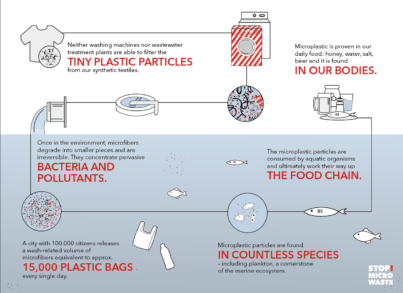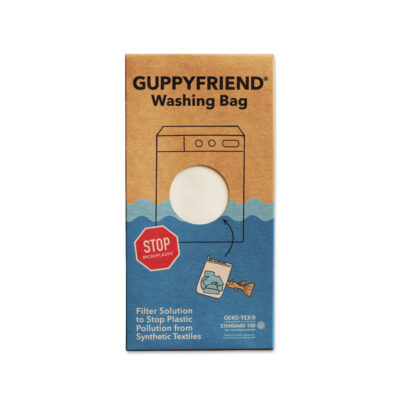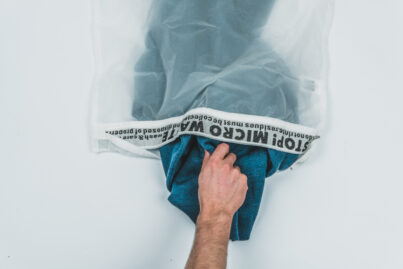This website uses cookies to ensure you get the best experience on our website. To read our full cookie policy please click here.
Toxic laundry: How to reduce your impact and help keep oceans plastic free
There’s been lots in the news about the banning of microbeads – but one of the greatest threats to our oceans and water supply is the enormous quantities of microscopic fibres we unwittingly release into our waste water every time we wash our clothes. If you check your ski clothing labels, the chances are that some, or most of it will include modern fabrics such as polyester, nylon, acrylic and polyamide, all of which are made from plastic and which release huge amounts of tiny particles of plastic when they are washed.
The University of Plymouth recently conducted a study which found that every time we put a wash on, the amount of microfibres released into the water ranges from 124 to 308 mg per kg of washed fabric. Depending on the type of washed garment this could mean that as many as 1.5m microfibres are released per wash and laundry is the single biggest source of microplastics entering our water supply. 
Further research undertaken by the NFWI in their campaign to mitigate our oceans from turning into ‘plastic soup’ suggested that the UK is responsible for releasing up to nine trillion microfibre particles into our water system just through laundry every week. That’s the equivalent of 500,000 tonnes every year. These tiny synthetic particles are so small that they often pass straight through the water treatment centres into our rivers and oceans, where they absorb chemicals and other pollutants. If this wasn’t bad enough, they are often mistaken for food by plankton, which are in turn eaten by fish and other sea organisms and enter into our food chain.
None of us wants to see marine life dying with stomachs full of plastic, and the thought of feeding our families fish and mussels full of microplastic particles is horrifying .
…So what actions can we take to help?
- Choose clothes made from natural fibres. The less plastic in our clothes, the lower the chances of plastic fibres entering our water supply.
- Having said that, all clothes shed fibres and the amount of fuel, water and earth’s resources used to make even natural fibres is high, so it is better to buy fewer clothes of better quality so that they will last longer.
- Wash less. It sounds obvious, but we should only wash your clothes when they are dirty. Try spot washing dirty marks with a damp cloth. Most items can be aired for a day to freshen them up, then returned to the wardrobe and worn again, without needing to be washed.
- Fill your washing machine. Make sure you only put on a full load – the more room that your clothes have to move around the drum, the more likely it is that microfibres will break off into the water.
- Use microfibre capture systems such as Guppyfriend Washing Bags to encapsulate the floating microplastics. These are a brilliant way to wash items such as gym kits that are made from plastics and require regular washing, as they capture all the microfibres they release.

- Avoid buying fleece clothing or microfibre cleaning cloths as these shed the most fibres.
- Reduce your cycle time and wash at 30 degrees – it is less aggressive for garments and reduces shedding.
- Line dry – don’t tumble. Research suggests that tumble drying can deplete the strength of the fibres, encouraging additional shedding.
- Petition for change France recently passed new legislation requiring the fitting of microplastic filters in all washing machines by 2025. Here in the UK, you can add your voice to the Marine Conservation Society’s campaign for washing machine manufacturers to fit microfibre filters in all new domestic and commercial machines, by law, by 2023 and retrofitted into commercial machines by 2024.
- If you are buying a new washing machine, ask the retailers and manufacturers if they have a microfilter installed. To date, only one manufacturer( Arçelik, owners of Beko and twelve other household appliance companies) has committed to installing filtration systems, but the more that we consumers demand this feature, the more manufacturers are likely to listen to us.


